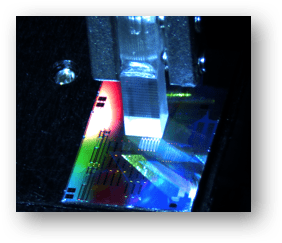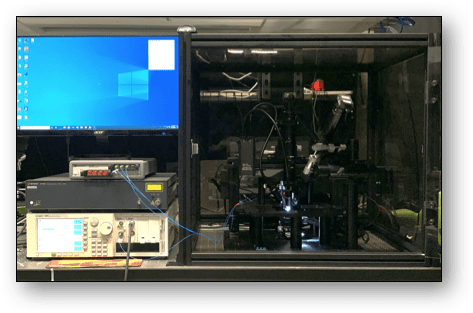“Repeatability of the experiment is really important. With Maple Leaf Photonics, the data becomes more trustworthy."
Dr. Volker Sorger, associate professor in GWU’s School of Engineering and Applied Science
The research led by Dr. Volker Sorger at The George Washington University’s Orthogonal-Physics-Enabled-Nanophotonics Lab (OPEN Lab) is creating breakthroughs in optical signal processing and high-performance computing. Their Maple Leaf Photonics system increased the efficiency and reliability of their novel photonic device and photonic integrated circuits (PiC) testing by automating manual processes and providing a system that is proven and ready to work on delivery. With constantly evolving testing needs, the Maple Leaf Photonics modular structure enables easy upgrades for added capabilities.

Challenges with PiC Testing: Lasting Damage and Catastrophic Downtime
Before the Maple Leaf Photonics optical probe station was installed, the team used probe stations with only two I/O ports and manual alignment. According to Xiaoxuan Ma, an OPEN Lab researcher, the manual approach was neither easy nor precise. “It had higher loss and did not exhibit the highest performance,” he said. Worse, repeatability was challenging and it was too easy to damage fibers or PiCs and induced debris into the optical path, which could introduce non-stable results.
Solution: A Probe Station That's Easy to Use, Multitasks, and Employs Customer-centered Software
Ease-of-use, repeatability, and simple test throughput is one of many benefits Dr. Sorger and his researchers appreciate about our SD100, a system that operates alongside the existing instruments in his lab and handle their variety of wavelengths, PiC structures, and electrical interfaces. One of the major selling points of our system was its software because it eliminated the need for developing their own suite of Python or MATLAB scripts if they went with different solutions.

"Just put the chip on the stage, press a button and walk through the alignments step by step.”
~ Xiaoxuan Ma, GWU doctoral student
Looking forward, OPEN Lab sees chip crowding becoming a bigger challenge. Leveraging their existing SD100 system with the addition of a second Maple Leaf Photonics optical head, OPEN Lab plans to take advantage of the system’s ability to perform both edge and vertical coupling to navigate the complexities on the horizon for projects on photonic neural networks and photonic analog processors.
